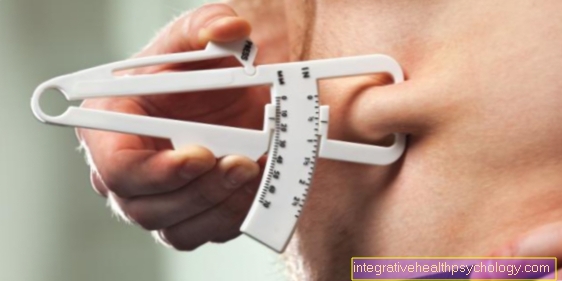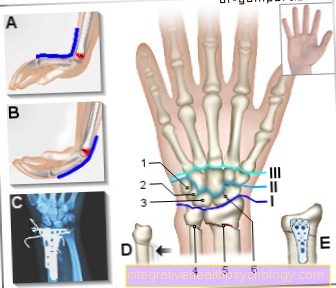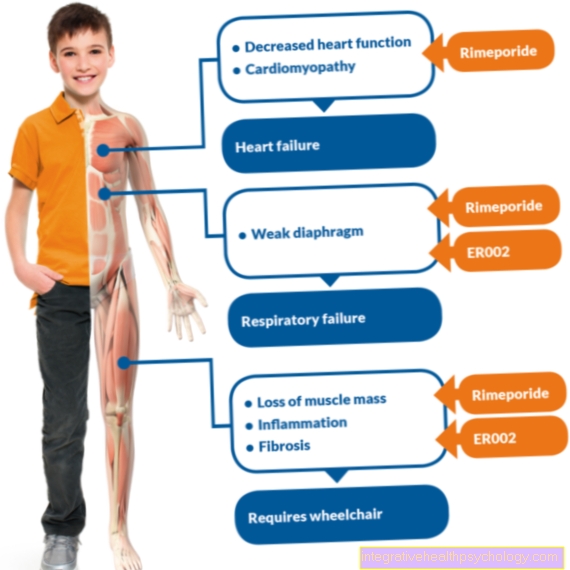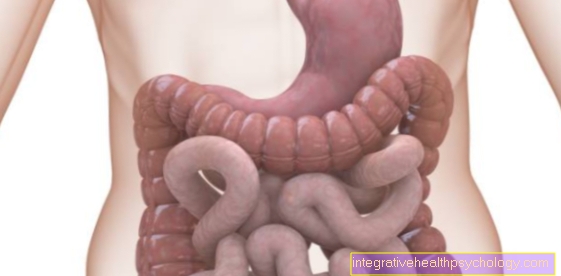Crash diet
What is a crash diet?
Crash diets are becoming increasingly popular and are constantly adding new magazine covers. They promise enormous success within a few days. "Crash" means violent and fast. Many crash diets promise weight losses of up to 5 or even 7 kilos in 7 days.Most diets are so-called mono diets, i.e. diets in which only one or very few foods are allowed to be eaten over a certain period of time. The effect of crash diets is very controversial and the dreaded yo-yo effect often follows on from rapid weight loss.
You might also be interested in this topic: Turbo diet

What crash diets are there?
Most crash diets are so-called mono diets. This means that only one or a small amount of food may be consumed over a certain period of time. The pineapple diet only allows the consumption of the exotic fruit as part of this crash diet. The valuable enzymes in pineapple are supposed to melt the body's fat reserves. The cabbage soup diet is also well-established as one of the oldest crash diets. However, many people find it difficult to stick to this diet for a long period of time because the soup is very monotonous, eating out falls flat and gas is frequent. During the egg diet only eggs may be eaten, 25 in number and prepared with low fat.
The more moderate diets are also popular: fruit or vegetable diets. The popular fruit diet consumes more than a kilogram of fresh fruit a day, while all other foods are prohibited. It is similar with the vegetable diet, where you can eat your fill. The vegetables can be eaten in the form of raw vegetables, vegetable juices, soups or smoothies. The fruit or vegetable diet can be limited to certain products, for example only green vegetables, only apples, etc. If you have difficulties avoiding carbohydrates, it is advisable to try a diet containing carbohydrates, such as the potato diet, the potato Egg diet or the rice diet. A special form of the crash diet is the 24-hour diet, in which you can eat 1200 calories a day. The dishes are rich in protein and low in calories. Strong athletic training units achieve weight loss because the body draws its energy from fat reserves.
Course of the crash diet
Crash diets are unhealthy in the long run, so you should limit the duration of the diet to a few days. Depending on which diet you choose, only the corresponding foods may be eaten and other foods are taboo. You should also limit your drinks, that is, if possible, avoid coffee with milk, avoid sugary drinks and keep your hands off alcohol. Water and unsweetened tea can be drunk in abundance. If you have enough energy despite the few calories, it is advisable to do light sports such as stretching, walks or yoga.
Weekly plan for a crash diet
As part of the crash diet, only the permitted foods may be eaten during the diet period. All other food, sugared drinks and alcohol are taboo. It is typical that a maximum of 800 calories may be consumed with food each day. Some lightning diets even have a lower maximum, while the 24-hour diet of 1200 calories is relatively generous.
Side effects of the crash diet
Crash diets lead to quick weight loss success, but most diets cause side effects that make it much more difficult to persevere. Most crash diets have too low a protein content, so that the body's own muscle mass is reduced over a longer period of time. The low calorie intake of most mono-diets makes many dieters feel weak and tired. A poor performance and concentration difficulties caused by the diet (see also: Poor concentration) can lead to problems, especially in everyday working life. Many people who try a crash diet suffer from hunger all the time during the diet and, especially in the first few days, there are cravings for sweets and salt. Occasionally even an unpleasant halitosis can result from the change in diet, which can make dealing with other people difficult and uncomfortable. All of these reasons make it difficult for many users to stick to a crash diet over a long period of time. Often the abrupt termination of a crash diet is followed by the dreaded yo-yo effect. As a result, one often weighs more after the diet than before the diet.
Criticism of the crash diet
Crash diets are a very one-sided form of nutrition. Radical mono-diets limit meals to one or a few foods. This means that the body cannot be supplied with all the necessary vitamins, nutrients, trace elements and minerals at all. Due to the lack of valuable substances, deficiency symptoms up to anemia can occur over a longer diet period. The monotony of the crash diet is therefore harmful and unhealthy if it is implemented for more than a few days. If the body is supplied with a significantly lower amount of calories overnight, the metabolism switches to the back burner. This means that when the body gets more calories again, usually after the end of the diet, it tends to build up fat reserves in case "bad times" come again. If you eat a diet rich in calories, unhealthy and snacking after a radical crash diet, this is often followed by a bad yo-yo effect. The monotony and often permanent hunger make it very difficult for many people to stick to a radical crash diet. Some nutritionists believe that a crash diet for 2-3 days can be used as a starting point for a change in diet, but not as a diet for a few days or even weeks.
What are the risks of the crash diet?
If a one-sided crash diet is implemented radically over a longer period of time, the body lacks important nutrients, vitamins, minerals and trace elements that it needs for its metabolic functions. If not enough healthy fats are ingested through food, the body cannot absorb fat-soluble vitamins through the intestines. This means that if the diet is followed for a long time, deficiency symptoms and anemia due to iron deficiency can occur.
Where can I find good recipes for the crash diet?
There are numerous different crash diets that can be researched under the collective term “crash diet”. You can call up the respective diet specifically on the Internet and get countless, delicious recipes for free. There are also different books for each diet. One advantage of the books is that they often contain shopping lists and complete diet plans so that a structure is provided.
How much can I lose weight with this form of diet?
Depending on which crash diet you decide on, what the individual starting situation looks like and what amount of calories you consume daily, the success of crash diets varies greatly. Some diets promise a weight loss of 5 to 7 pounds in a week. Especially in the first few days, the body flushes out a lot of water when changing diet, which can also be observed on the scales.
How can I avoid the yo-yo effect with this diet?
Unfortunately, the dreaded yo-yo effect follows the majority of crash diets. During the diet, the metabolism switches to the back burner due to the low calorie intake. You lose weight quickly. If you suddenly supply the body with significantly more energy in the form of calories, i.e. food, the body uses these in the form of love handles to prepare for the next period of hunger. Most people hit hard when they are allowed to eat again after a hard crash diet. As a result, most people quickly regain weight after the diet, which was previously painfully lost. Often you weigh a little more afterwards than before the diet. In order to avoid the yo-yo effect on a radical crash diet, only one thing helps: the diet as an introduction to a change in diet (see also: Lose weight by changing your diet). This means that after the crash diet, you gradually increase your calorie intake and, at best, continue to do a lot of sport. Then the metabolism has the opportunity to adapt and is less prone to the dreaded yo-yo effect.
Medical evaluation of the diet by
Crash diets have advantages that attract many users: they promise very pronounced weight loss within a few days. These diets are often used before summer vacation or events such as an upcoming wedding. You wash out a lot of water in the first few days, the pounds drop and you quickly feel much leaner. However, the diet is unhealthy and harmful for an extended period of weeks or months. Crash diets are too one-sided and by no means provide the body with all the vitamins it needs (see also: Vitamin deficiency) and nutrients. If the implementation lasts more than 1 - 2 weeks, dangerous deficiency symptoms can occur. Therefore a crash diet should only be done for a few days. It is advisable to use a crash diet to get started with a new, healthy, balanced diet. To avoid the yo-yo effect, one should slowly increase the calories and additional foods. In order to lose weight in the long term and maintain the desired weight, you should exercise regularly. The conclusion to the controversial crash diet is: gladly as an introduction to a healthy diet, but definitely not as a radical diet over several weeks!
What alternative diets are there to the crash diet?
Crash diets are mostly made to lose as much weight as possible in the shortest possible time. Weight loss per week on these diets is significantly higher than on most other diets. There are diets that actually correspond to mono diets, but can be made more flexible, for example the Turbo Diet by Almased and Yokebe. From the second diet week onwards, this includes meals in addition to the diet shakes (such as NISY) and is therefore healthier than zero diets. It can also be carried out for more than a few days. These diets also include a maintenance phase to avoid the yo-yo effect. If you want to lose weight over a longer period of time and follow the diet more flexibly, low-carb diets are often tried, which can be easily integrated into everyday working life. Examples are the Logi-Method, the Glyx-Diet, Military Diet or the Atkins-Diet.
Different aspects are considered with these types of diet, for example the blood sugar and blood fat levels as well as the glycemic index (the glycemic index indicates the extent to which a certain food causes the blood sugar level to rise after consumption) various foods. There is a conscious awareness of what you are eating. The situation is similar with the food combining diet, in which foods may only be eaten in certain combinations of food groups. These diets are less one-sided than crash diets and can be done over weeks, months, or even years. In order to lose weight in the long term and maintain the desired weight, you should do a lot of sport. Sport stimulates the metabolism, gets the body in shape and provides vitality.
What are the costs of a crash diet?
The cost of a crash diet depends heavily on the diet in question. If you go on a diet that consists mostly of fruits or vegetables, the prices vary greatly. For example, exotic fruits like pineapples are more expensive than most green vegetables. Carbohydrates like rice and potatoes are relatively cheap and can be bought in bulk. Diet shake powder from Almased, Yokebe or Doppelherz are relatively more expensive at an average of 15 € per 500 gram can, but replace numerous other meals, so that the costs of crash diets are overall in a moderate range.





























